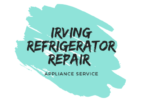Dishwasher not draining by itself is one of the primary concerns that troubles users after a while. Often, it is the junk from the dishes or the wrong detergent that ends up clogging the dishwasher. Getting the dishwasher unclogged may look like a complex appliance repair mechanism from the outset, but it is just a simple task that can be accomplished without much hassle.
The dishwasher has different parts and junk may be clogged in any of them. A step wise check of all the parts followed by thorough cleaning is enough to get the dishwasher working back to normal. Here is a stepwise guide that can help you perform a check on each part and get them cleaned with ease.
1. Drain Hose
The drain hose can be accessed by removing the kickplate panel located below the door. Drain hose is the first thing that should be checked as it more vulnerable to getting clogged with any junk that drops down from the dishwasher tray. Once accessed, it should be removed to check for any debris and then reconnected before starting the dishwasher again.
2. Pump Assembly
The pump assembly of the dishwasher is one of the more complex parts to counter during dishwasher repair. It has a pump connected with a drain impeller and wash impeller. It might have a drive belt as well. If it does have a drive belt, it is important to check if the belt is not damaged. In case of a damaged belt, the pump won’t drain the dishwasher. Damaged belt should be replaced as they don’t usually get repaired.
Suppliers like the Irving Refrigerator Repair are good with their job of providing durable drive belts for dishwasher. Apart from the drive belt, the cleaning of the pump assembly starts from the wash impeller and ends with the drain impeller. Any debris found in this path should be removed. Once done, the dishwasher should be good enough to go again.
3. Dishwasher Timer
The dishwasher timer can impact the dishwasher’s draining abilities. It is the timer that decides when the dishwasher is supposed to ideally drain out the remains. If there is no debris clogging any part, the timer is the main part that may lead to the dishwasher not draining. If found to be defective, it is better to replace the timer instead of repairing it.
4. Drain Valve
The dishwasher’s drain valve opens up to let the debris drain out after the wash cycle is completed. If the valve gets clogged or stuck due to any technical fault, the dishwasher may fail to drain out. It operates on the timer of the dishwasher. If the timer is working fine, a simple check and cleaning of the drain valve should do good.
5. Dishwasher Motor
A continuity test of the motor is necessary to ensure it is not interrupting the drainage mechanism of the dishwasher. If the motor fails to pass the continuity test, it is advised to replace it at the earliest. To conduct the continuity test, the motor should be unplugged from the assembly first. After that, using a multimeter, both the motor’s terminals should be probed one at a time. If the meter shows approximate zero resistance, the motor is working as intended. If there is any deviation, replacement becomes the only option.
Tips : Draining a Dishwasher Manually
Once the dishwasher gets clogged and doesn’t drain out, it becomes mandatory to drain it manually at least once. It may be fixed and repaired easily, but it does need to get drained first before undertaking any fixes. Here is a simple three-step guide that can ensure proper manual draining of the dishwasher.
Step 1 : Cover the Floor
The floor below the dishwasher has to be covered first to ensure there is no effect of any spillage. Towels can work fine for covering the floor. Newspapers will also get the job done.
Step 2 : Empty the Dishwasher
After covering the floor, the water clogged inside should be scooped out using a bowl into a sink.
Step 3 : Dry up the Dishwasher
After the water becomes too shallow to be removed by a bowl, a piece of cloth or towel should be used to remove it. This should be done until the dishwasher surface becomes moisture free. Any visible debris should then be removed before reusing the dishwasher again.
Continue reading about “Appliance Repair“

